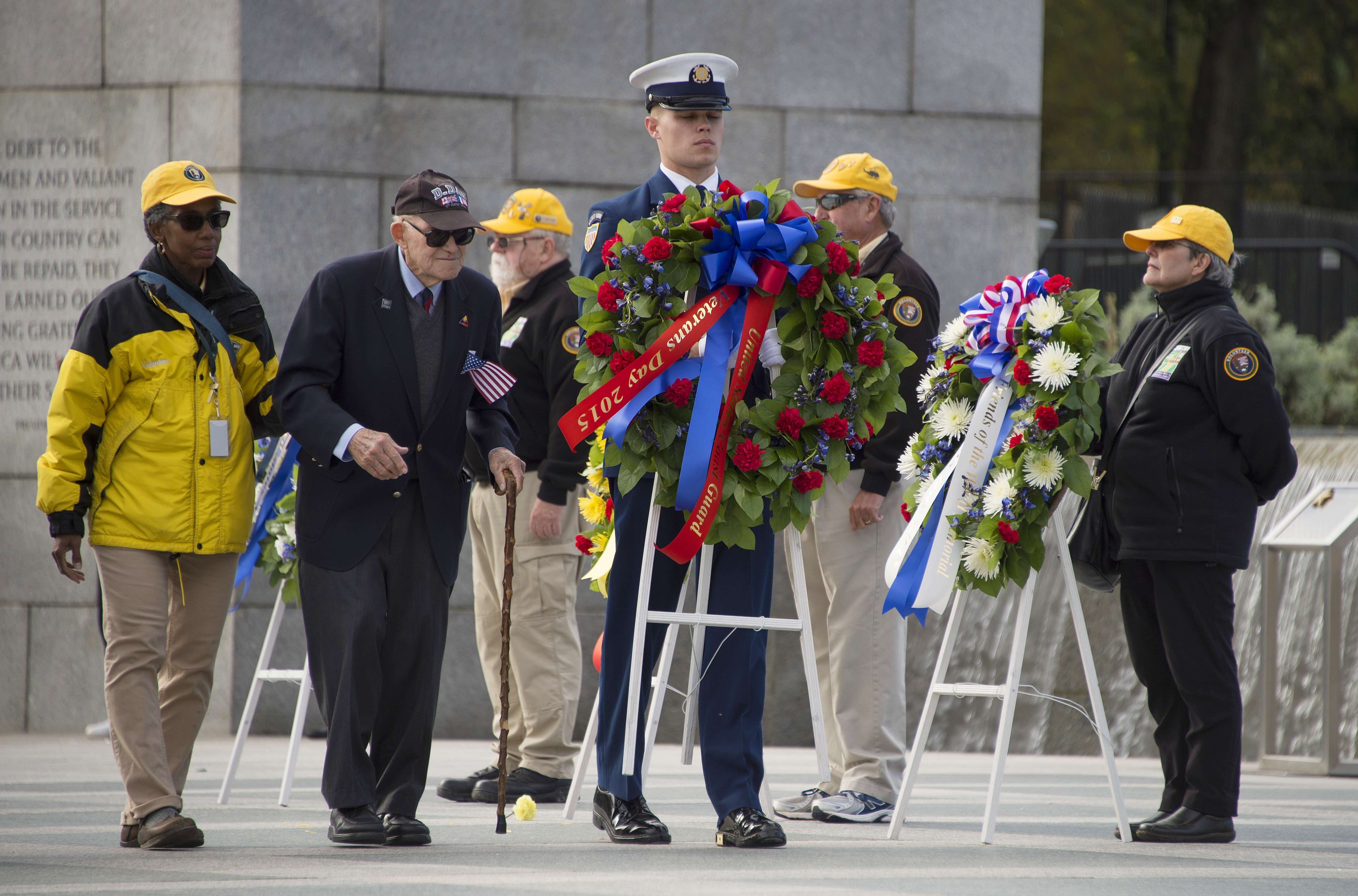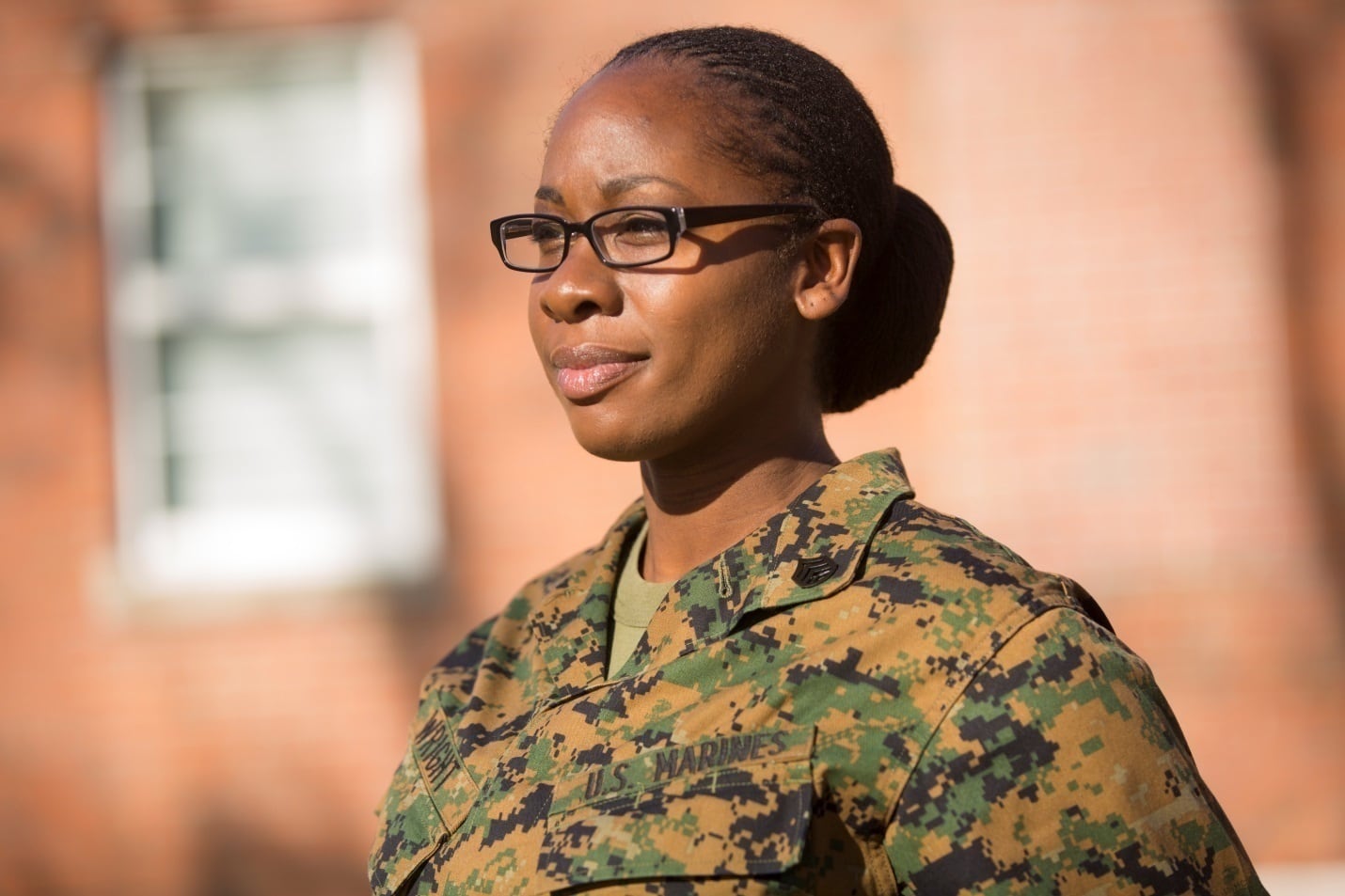Locks and twists are now authorized for female Marines, and they can thank Staff Sgt. Cherie Wright for it.
Marine Corps Uniform Board 215 determined the additional hairstyle options are professional and neat in appearance, and may be easier for some female Marines to maintain in an expeditionary environment. The commandant agreed, and the new rules were announced in Marine administrative message 622, released Dec. 14. They take effect immediately.
The Marine Corps is the first service to allow locks. The changes were driven by the recommendations of Wright, a supply chief with II Marine Expeditionary Force at Camp Lejeune, North Carolina. The 10-year vet said that under the old regulations her hair was difficult to manage and lacked a professional appearance, especially after physical training. She wore a wig for almost four years, but it caused daily headaches.
"I said something has to be done about this," Wright told Marine Corps Times. "I don't understand why I have to cover up my natural hair."

She began to research the issue and formulated an argument to change the hair regulations. A paper she wrote for a career course in 2014 covered everything from the psychological effects of the previous hair regs on black women to the financial losses they suffered to the challenges they faced when deployed. The report made a big impression. Her sound and thoroughly researched arguments made their way up the chain, first to the director of the Staff NCO Academy, then to the Uniform Board and, ultimately, to the commandant of the Marine Corps.
Wright went through a long process of written proposals and oral presentations, even briefing the commandant, before final approval was given, to the delight of many women across the service.
RELATED
Lock hairstyles are defined as one section of hair that twists from or near the root to the ends of the hair, which creates a uniform ringlet or cordlike appearance. Locks may be worn with short, medium or long hair; partings must be square or rectangular to achieve a neat and professional military appearance.
Twist hairstyles allow two sections of hair twisted together, which forms a rope or cord-like appearance. Twists may only be worn with medium or long hair, and can extend no more than 2 inches from the scalp. Medium length does not extend beyond the collar's lower edge and extends more than one inch from the scalp. Long hair extends beyond the collar's lower edge.
One- and two-twist hairstyles such as the French twist are authorized as long as a neat and professional military appearance is maintained and the hairstyle does not interfere with the proper wear of headgear.
Only braids and twists may be "secured" to the scalp (hair is continually added to the braid or twist as it continues to the hairline at the nape of the neck).
This must follow the contour of the head from front to nape in one direction. Individual braids, twists, and locks can be no more than 3/8-inch apart, cannot be more than 3/8-inch in diameter, and must remain tightly interlaced/twisted. New growth, which is defined as hair that naturally grows from the scalp and has not yet been braided, twisted or locked, cannot exceed ½-inch at any time. Locks, multiple braids, and multiple twist hairstyles must encompass the whole head (with the exception of bangs. Mixing of styles is not allowed, and foreign material cannot be incorporated into or attached onto the hair.
A website is being created that will identify and graphically illustrate authorized and unauthorized male and female hairstyles, officials said. This website is scheduled to be up and running within 30 days and will be added to the Marine Corps Uniform Board website.
Wright later told Marine officials "for some, this change is culturally liberating, has financial benefits, and is simply convenient." Since the announcement, her cellphone and email have been filled with messages from people sharing thanks and congratulations, including women in other military branches. She called the responses "encouraging and humbling."

Wright shows off her hairstyle Dec. 16. The 10-year vet said that under the old Marine Corps regulations her hair was difficult to manage and lacked a professional appearance, especially after physical training.
Photo Credit: Cpl. Kirstin Merrimarahajara/Marine Corps
"It definitely makes me appreciative to see that hard work pays off, and that we have great leaders who are willing to listen to the issues that arise in the Marine Corps," she said.
For Marines who would like to see something else changed, her advice is direct: Don't just sit around and complain. If something needs to be changed, find a way to make it better.
"Do your research, present it in a formal way, be open to criticisms, be willing to shape and mold your presentation, and definitely have perseverance and determination," she said. "There are a lot of people who feel like the water is fine just the way it is. It is up to you to sway them and let them know that can be made better."




